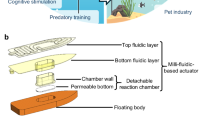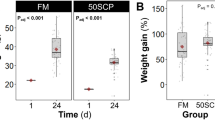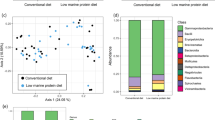Abstract
THE importance of the surface film of protein on stationary or slowly moving bodies of water as a food for small aquatic animals had apparently not been realized until the recent work of Goldacre1, who made film-pressure measurements on ponds, lakes and rivers and found on all of them unimolecular layers of protein in higher or lower states of compression. A concomitant study of the behaviour of small aquatic animals led him to the conclusion that they ate this protein in large amounts. Observations of the movements of dust particles in a film during its ingurgitation by a tadpole indicated that this animal might well eat its own dry weight of protein, spread as a monolayer at the air–water interface, in one day.
This is a preview of subscription content, access via your institution
Access options
Subscribe to this journal
Receive 51 print issues and online access
$199.00 per year
only $3.90 per issue
Buy this article
- Purchase on SpringerLink
- Instant access to full article PDF
Prices may be subject to local taxes which are calculated during checkout
Similar content being viewed by others
References
Goldacre, R. J., J. Anim. Ecol., 18, 36 (1949).
Author information
Authors and Affiliations
Rights and permissions
About this article
Cite this article
CHEESMAN, D. The Snail's Foot as a Langmuir Trough. Nature 178, 987–988 (1956). https://doi.org/10.1038/178987b0
Issue date:
DOI: https://doi.org/10.1038/178987b0



